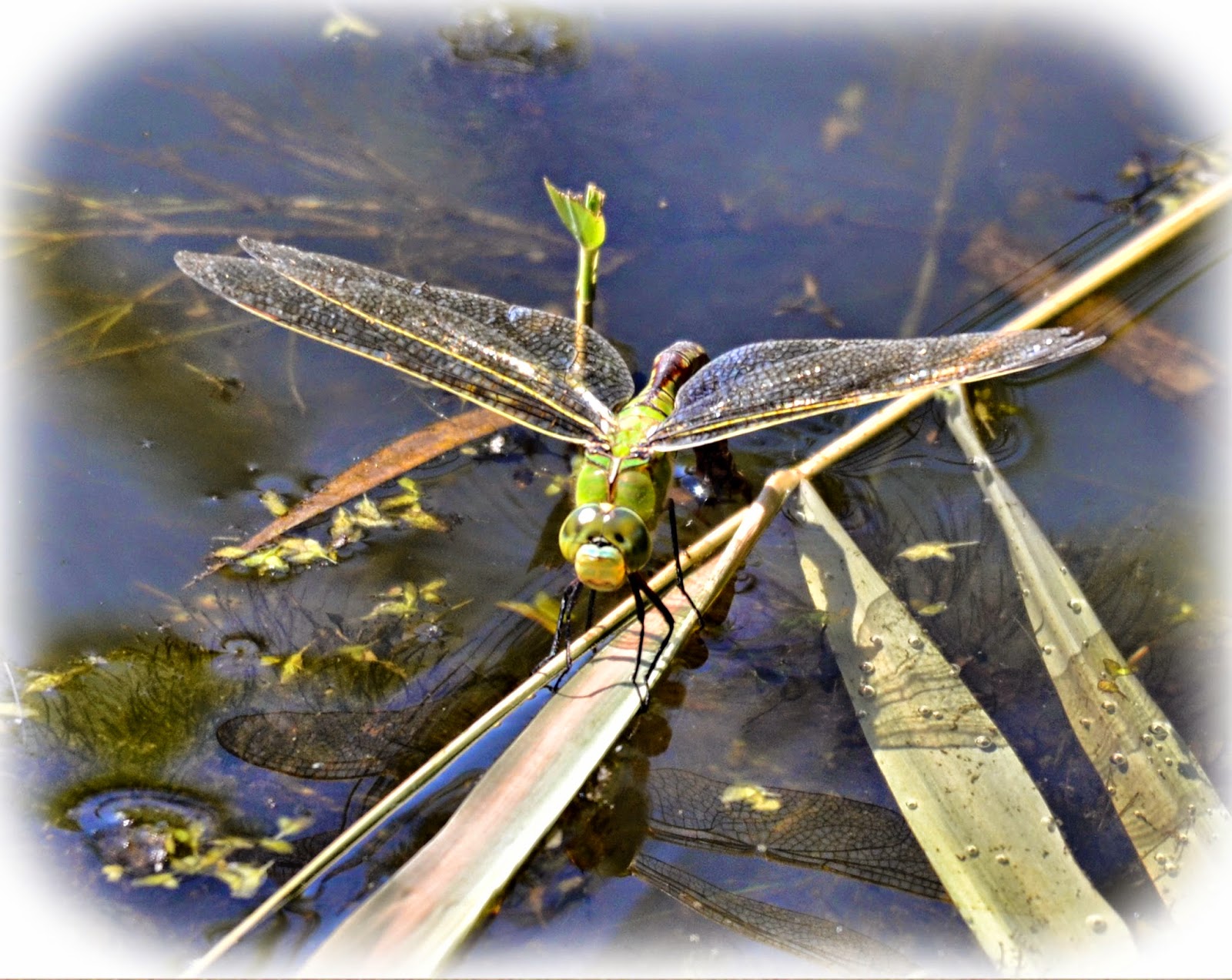There's a beautiful Buddleia outside the Cordite Store at Rainham RSPB, also known as the Butterfly bush, its flowers provide an important nectar source for many species of butterfly and other nectar loving insects.
These Buddleia are always worth checking out, two weeks ago, it was alive with Peacock, Red Admiral and many other types of butterflies and bees.
Sadly, today the blooms have now faded and turning to seed.
A Migrant Hawker, a male, flew into view and seemed very interested in the faded Buddleia blooms, and as luck would have it settled several times within camera range.
This Hawker seems quite common now in the south of the country, with good numbers seen all around the reserve at Rainham.
After only thirty seconds or more it was off, I know that dragonflies often return to previous perches so I waited in the hope that it would return, and provide further photo opportunities.
Another Hawker appeared, again interested in the Buddleia blooms, my first thought was that the Migrant Hawker had returned as I had hoped, but this Hawker looked different, large Blue eyes were distinctive, but the all blue abdomen was different, there were no brown or yellow markings, my first thought was maybe a Southern Hawker, I had left my glasses at home, so it was a matter of checking the field guide on my return to home.
On looking through the guide, there it was, a Southern Migrant Hawker sometimes known as a Blue-eyed Hawker, and quite scarce. Used to be a rare vagrant from mainland Europe, but now occurring at a few sites in Kent and Essex.
The field guide described it as a relatively small hawker, but my impression was of it being slightly longer in the abdomen than the Migrant hawker.
Another new Dragonfly for me, and on checking the Rainham RSPB blog site another visitor had also seen the Blue eyed Hawker in front of the Ken Barrett hide, later in the afternoon,
not far from where I had seen the Hawker, so confirmed.
Other dragonflies noted were Emperors, Brown Hawkers, Black tailed Skimmers. A number of female Emperors were seen ovipositing as shown below.
And the closest I have got to capturing an image of a flying Emperor ( rear view)
Darters were once again represented by the Ruddy Darter, which seem to be more common than the "Common Darter "
I originally identified this damsel as a Red Eyed Damselfly, but after further investigation, I now think this is probably a
Small Red-eyed Damselfly.
This one appears to have shoulder stripes, the wings just about reach S7, there is a coenagrion like spur on the side of the thorax, there is also the blue wedge shape on the side of S8, they have also been reported at Rainham recently, I might be wrong,
I need to compare against a confirmed red eyed damselfly.
I quite liked this image of the Red-eyed Damselflies flying in Tandem, with the Male looking like a mini helicopter.
My list of Dragonfly species has now reached eighteen for this year.
Rainham RSPB, always a good place for Odonata sightings.








No comments:
Post a Comment